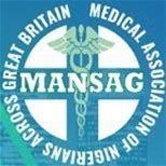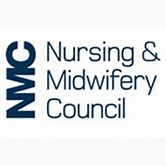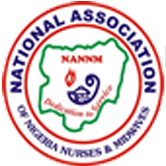LSSNMAIA FIVE YEAR STRATEGIC RESEARCH ALLIANCE 2020-2025 AND FRAMEWORK FOR COLLABORATIOn
PROPOSAL
LSSNMAIA is seeking ACTIVE SUPPORT & COMMITMENT from Stakeholders, to INVEST in, and COLLABORATE with NURSES on a FIVE-YEAR STRATEGIC RESEARCH ALLIANCE (First Program Starting 2020-2025).
Over a given period, all nurses from colleges and universities, physicians and allied health professionals will collaborate strategically to conduct a number of new programme of research activity, supporting existing and or the development of new nursing research, evidence based practice and research capacity.
Ultimately, the program will seek to upskill nurses broadly, develop nurse researchers, influence public policy, and improve practice with better outcomes for service users and the workforce.
The core objectives of the Strategic Research Alliance are as follows:
To produce excellent international quality research and evidence reviews that will inform national and international nursing and health practice and policy, thus benefiting patients, families, health professionals and health outcomes;
To disseminate and share research findings to inform developments in education, practice and policy designed to improve nursing and health care.
To enhance public and user awareness of nursing issues.
To work alongside service users, healthcare providers and stakeholders to ensure that, the activities are significant, meaningful, and timely
To utilise research to inform nursing educational programmes and practice.
The program will be organised under three key themes: Workforce, education and evaluation.
The framework of Collaborative Strategy
Theme: Promoting Quality Care and Patients’ Safety through Interprofessional Collaboration.
Board
Establish a board that would reflect the broad representation of professional and organisation membership within the partnership. Their role is to establish the potential capability of the strategic research alliance partnership to embrace representatives from all sectors.
Strategic Partners must include a wide range of participants from the state and private sector hospitals, healthcare provider organisations, interdisciplinary / multidisciplinary professionals, community, businesses, and voluntary sectors that can act together and have clearly defined goals and objectives.
The board has minimum of ten and a maximum of twenty members from across the five main regions of the state health service plus private sectors, in addition to a minimum of two researchers from Lagos State Research Team.
The board includes people with authority to take decisions and people with appropriate level of seniority to make things happen.
The board is inclusive and it has a representative approach and offers guidance to potential research group.
The board executive structure is action focused and it includes LSSNMAIA’s executives and it embraces people from other organisations. See aspects of collaborative strategy table below.
Commitments:
LSSNMAIA board members approves or appoint members to the new board and separate board.
The new board meets regularly to consider the partnership, and organisational structure to assess its fit for purpose and address any shortcomings.
The board also meet to review service areas that may benefit from joined up practice, and service review for a sustainable safe practice.
The multi-complex nature of any practice development issues and potential challenges such partnerships like:
- Review of current evidence on education and regulation of traditional birth attendants and bonesetters and the advantages of nurse-led service in rural areas.
- Review of patient’s referrals between the primary, secondary and tertiary sectors, from admission to discharge home, with a focus on medical and administrative management and discharge planning and implementation.
- A study on the determinants of nurses’ attitudes towards patients and patients’ attitudes towards nurses and other healthcare providers
- A study on the advantages of achieving ongoing advance professional and clinical competence development set against a series of varying local staff development initiatives
- As well as, the need to update identified policies, or develop new and or connect conventional policies to meet new and or existing requirements.
- The board inspire research projects in practice and review research practice with the support of the lead researchers.
- The board organises awareness events for disseminating research findings locally and at LSSNMAIA events at the end of the strategic alliance year i.e. 2023 or 2025. See the core objectives of the Strategic Research Alliance:
Five Year Strategic Medical and Nursing Research Subject Areas
¨ Innovations in Healthcare Practice – How organisations are using innovative solutions to solve problems i.e. Patients’ records / survive the resource shortage, increase caseload and individual capacity
¨ Governance and Leadership – Medical Legal aspects of Practice
¨ Joint CPD / CE Physicians and Nurses
¨ Emergency Care – Community Nursing and Hospital Case Management
¨ Holistic Patient Management Collaboration and Teamwork from Referral, to Admissions, and Discharge to originator or Patients’ home.
¨ Nursing, Midwifery and Medical Care and Patients’ Satisfaction
¨ Nursing and Midwifery Clinical Practice today – Breaking Barriers
¨ Adult, Children and Family Medical Services – Missed Opportunities
¨ Reproductive and Sexual Health
¨ Vaccination – HIV HPV Hepatitis TB Polio Malaria
¨ Children and Young People Nursing
¨ Geriatric Health and Nursing – Accessing Elder Services
¨ ITC Health and Social Media – Remote Health Service Management
¨ Medico-Nursing Research – Impact and Practicalities to Improve Teamwork
¨ Review of Current Policies and Protocols – Clinical and Non-Clinical Practice Areas in both Private and Government Units
¨ Review of Community Care and Teamwork in Practice – Nurse led Services
Clinical Investigations and Reporting
Patient Nurse Communication in practice – all areas
Aspects of Collaborative Strategy |
Aspect of Collaborative Strategy | Collaborative Advantage | Indicators | Potential Problems and Solutions
|
Selection of Members
| The importance of interprofessional collaboration is expressed in patterns of involvement, trust, and commitment (Collaborating action as an expression of purpose) | Strategy for recruiting well motivated partners in terms of trust and probity as well as prepared participants in terms of allocation of time and resources | Interprofessional Collaborative groups representing different sectors may experience unusual difficulties. Have an agreed code of operation. Take prompt action to overcome differences. |
| |||
Vision of Collaborative Organisation
| Integration of a collaborative organisation under a shared vision and integration within the broader scope for service and professional development (Collaborative action as an institutional framework) | Strategic vision reflects the participation and expectations of all members – Shared feeling that collaborating will solve common problems
| Involving members from different sectors is critical to an interprofessional and collaborative organisation’s success however, it can be problematic and some flexibility can help |
| |||
Structure of Collaborative Organisation | The ability of a collaborative organisation to act responsibly within a collaborative scheme (Collaborative action as a model of conduct) | Strategy objective aims is to provide context for decisive acts in the implementation of research applicable findings | Conflict can arise. Share power across the board early, allocate resources fairly, and address conflicts to ensures a smooth program operation |
| |||
Plan Delivery of Collaborative Organisation | The collaborative board have ability to acquire and organise resources to deliver chosen research activity against collaborative capacity | Implementation of the strategic plan according to allocation of roles and responsibilities – Adaptation to needs and demands
| Sufficient implementation of the strategic plan. Remove any existing disharmony and conflict between the members of collaborative or organisation |
Review and Change of Collaborative Action | The capacity for collaborative partners to review its research processes, ethics, distress areas etc., (this collaborative action is mechanistic and repetitive character) | Strategy in reviewing policies and processes and providing feeding back to policy makers and producing appropriate changes in practice | Coordinating what aspects of the collaborative organisation’s operation should be reviewed and problems resolved |
You may update and or adapt document as required.
LSSNMAIA














